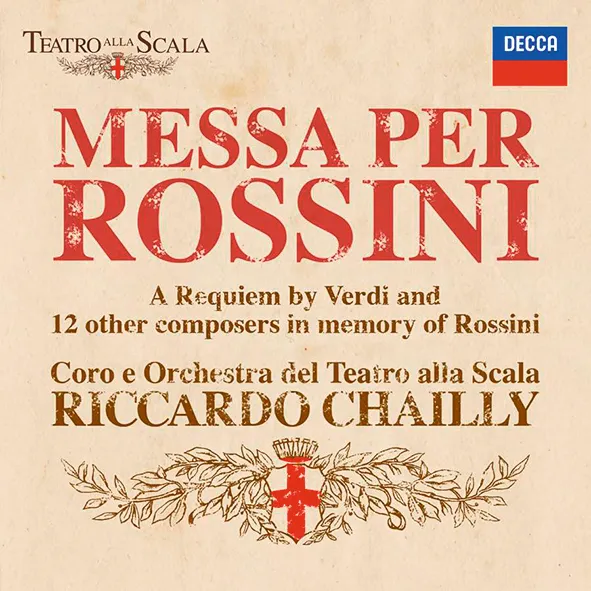
Verdi et al Messa Per Rossini María José Siri (soprano), Veronica Simeoni (mezzo-soprano), Giorgio Berrugi (tenor), Simone Piazzola (baritone); Coro e Orchestra del Teatro all Scala/Riccardo Chailly Decca 483 4084 100:44 mins (2 discs)
When Rossini died in 1868, he was still regarded as the greatest of Italian opera composers, Verdi not yet having ascended to that position. Rossini hadn’t written an opera for 30 years, and the pieces he did write were not widely performed, but he was venerated, above all by Verdi, who organised the composition of a Requiem in his honour by all the leading Italian composers of the time. There were plenty, opera being the most popular form of musical entertainment, and Verdi recruited 12 of them to write a section of the Requiem each, with Verdi himself concluding the work with the Libera me. It’s not hard to imagine the difficulties involved, artistic and other, and the result was that the work, though completed, wasn’t performed. Incredibly, it had its first performance in 1988, and was recorded under Helmut Rilling, the Bach specialist.
This new recording is finer than that first one, though no one who has the Rilling need worry. Only hyper-specialists will recognise the composers’ names: Buzzolla, Nini, Boucheron, Coccia, Platania – need I go on? The results are varied, ranging from the barely competent to the pretty interesting, but of course Verdi dwarfs them with his Libera me, a first version of what became the last section of his own transcendent Requiem. This version is largely similar, with the terrified soprano soloist getting it underway, but its cumulative force is less than the later version. Several of the other sections are well worth listening to, perhaps their most interesting feature being the weight of the orchestra, compared to the operatic composers of earlier in the century. This is a fine account, too, with Riccardo Chailly showing that he has become the leading contemporary exponent of the music of that time and place.
Michael Tanner